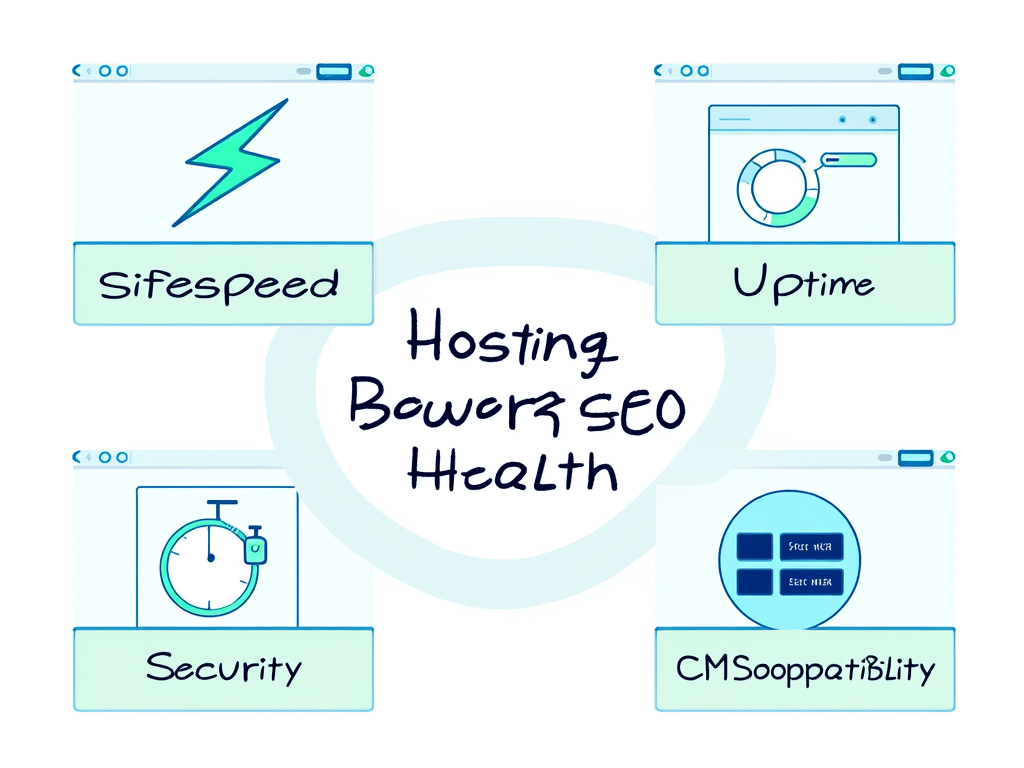დომენურ სახელებსა და ვებსაიტის გამოყენებადობას შორის კავშირი
Main keywords: domain names, website usability
Additional phrases: user experience, domain name impact, website accessibility, memorable domain names, SEO and domain names
მეტა აღწერა:
Discover how the choice of domain name profoundly impacts website usability, user experience, and brand trust, shaping online success.
შესავალი
Choosing the right დომენის სახელი is a critical yet often underestimated factor that directly influences website usability and overall user experience. Beyond being a simple web address, a domain name shapes first impressions, affects site accessibility, and plays a vital role in user retention and trust. It’s more than just a label; it’s the digital handshake that welcomes visitors to your online world.
დომენურ სახელებსა და ვებსაიტის გამოყენებადობას შორის კავშირი
Understanding How Domain Names Affect Usability and Experience
The domain name serves as the gateway to your website, giving users their first interaction with your brand and content. Think of it as the misty fog that wraps around a grand castle; it sets the tone even before the visitor steps through the gates. From ease of recall to perceived professionalism, the domain name profoundly impacts how users experience and engage with your website.
Key usability factors affected by domain names include:
დასამახსოვრებელი: A simple, concise, and brand-aligned domain is easier for users to remember, encouraging repeat visits without reliance on bookmarks or search engines. Picture this: a user casually mentions “FitLifeWellness.com” at lunch; within moments, their friend can input it into their browser—easy, right? This kind of instant recall fosters a connection and drives traffic.
First Impressions and Trust: The domain name conveys professionalism and credibility instantly. A coherent domain that aligns with the website's content fosters trust; meanwhile, an odd or complex domain can confuse users and erode confidence in the site. It’s like meeting someone at a party with a name that’s difficult to pronounce; it might leave you uncomfortable and hesitant.
Typographical Ease: Domains that are easy to type reduce errors and user frustration. Because let’s face it: no one enjoys getting the classic “404 Page Not Found” because they misspelled a casual URL. Imagine trying to remember “SuperDuperGadgetEmporium.com” when you could have “SuperGadgets.com”—less headache, more clicks.
Accessibility and Findability: Domains containing relevant keywords improve search engine visibility, aiding users in discovering the website organically. It’s not just about getting found; it’s about making the journey smooth and intuitive. When a site name pops up in searches, it’s because it aligns with the user’s intent—success!
Consistency and Longevity: Keeping a stable domain name over time preserves brand recognition and reduces confusion. It’s an anchor in a constantly changing digital sea. When a user knows they can count on finding “EcoWonders.com” without the risk of it changing to “WondersOfEco.com,” it eases their journey back.
Domain and Website Relationship: Alignment between the domain name, website branding, and content is essential to avoid cognitive dissonance. Think of trying to buy a guitar from a site called “BakingHeaven.com”; there’s a disconnect that disrupts the experience.
Additional practical usability elements linked to domain names:
URL Length and Structure: Short, descriptive domain names and URLs enhance usability. URLs under 78 characters minimize line breaks and make sharing easier. When you want to share something over text, brevity is purity.
Top-Level Domains (TLDs): Choice of TLD, like .com, .app, or .tech, provides additional context, boosting the user’s understanding and expectations. It’s about creating a sense of place on the internet—where does this domain fit in?
Navigation through Domains and Subdomains: For businesses with various offerings or locations, using subdomains or specific domain names for different segments streamlines navigation. Imagine a restaurant with branches in different cities, each with a subdomain reflecting its location: “Chicago.BestPizza.com” stands out. Even a quick glance helps users land precisely where they want to be.
Practical Tips to Optimize Domain Names for Better Website Usability
To leverage domain names for superior usability, consider the following guidelines:
1. Choose Simple, Clear, and Brand-Relevant Names
Use words easy to spell and pronounce to reduce user errors. Align the domain name with the website’s brand identity.
2. Prefer Shorter, Concise Domains
Short domains ideally should be under 15 characters to facilitate typing. It’s all about ease of use.
3. Select the Right TLD
Widely recognized TLDs such as .com for general business sites or targeted ones for niche markets like .app for applications are your friends.
4. Maintain Domain Name Consistency
Avoid changes to retain user trust; frequent domain shifts can confuse visitors.
5. Consider Domain Name Structure and URL Usability
Structure URLs logically to support intuitive navigation, and stick to all lowercase letters.
6. Secure Your Domain
Implement HTTPS by securing your domain with SSL certificates, increasing trust and user confidence.
7. Monitor and Prevent Typo Traffic Loss
Anticipate common misspellings by registering variations to avoid losing potential visitors.
8. Integrate Domain Naming with SEO
Include relevant keywords without overstuffing for better search engine rankings and quality traffic.
Example table illustrating domain name usability factors:
| Usability Factor | საუკეთესო პრაქტიკა | User Benefit |
|---|---|---|
| Memorability | Simple, brand-relevant domain names | Easier repeat visits |
| Typographical Ease | Avoid complex or foreign words | Reduce user input errors |
| TLD Selection | Use familiar or targeted TLDs | Set user expectations clearly |
| URL Length | Keep domain and URLs short | Easier typing and sharing |
| Consistency | Use stable domain name(s) | Build long-term user trust |
| უსაფრთხოება | Implement HTTPS | Enhance trust and SEO |
ის domain name is more than just a web address—it is a foundational element shaping website usability and user experience from a user’s very first impression. A well-chosen domain fosters trust, eases navigation, enhances memorability, and supports brand recognition. By investing effort in domain name choice and maintenance, website owners build a strong, user-friendly digital presence destined for long-term success.
FINDDOMAIN.GE (შპს ინტერნეტ სერვისები) ძალიან საინტერესო და სწრაფად განვითარებადი IT კომპანიაა. ძირითადი მიმართულებებია: ვებ-განვითარება, დომენები და ვებ-ჰოსტინგი. ის ასევე სთავაზობს კლიენტებს ძირითად სერვისებთან დაკავშირებულ ქვე-მომსახურებას და აუთსორსინგს.
საუკეთესო შეთავაზებები:
გსურთ შექმნათ თქვენი საკუთარი კომპანიის ვებსაიტი ან შექმნათ თქვენი საკუთარი ონლაინ ბიზნესი ინტერნეტში?
– ვებ ჰოსტინგი
– დომენის რეგისტრაცია
– ვებ-განვითარება
– საიტის შემქმნელი



Incorporating User Feedback for Domain Name Optimization
Integrating user feedback into your domain name strategy can illuminate further avenues for improvement and enhancement. Regularly soliciting user input about how easy they find your domain, as well as how memorable or professional it seems, can lead to invaluable insights. A few effective methods to collect feedback include surveys, direct interviews, and website analytics.
For example, A/B testing two variations of a domain name can provide quantifiable data on user interactions. If “NatureLover.com” performs better with traffic than “EcoAwakening.com,” the choice is simple, and the adjustment enhances the user experience.
The Role of Branding in Domain Usability
Branding is intrinsically tied to usability. Your domain name isn’t just a starting point; it is a significant part of your overall branding strategy. When users encounter a brand consistently portrayed across all touchpoints—visual design, messaging, and their experience on the website—they are more likely to trust and engage deeply with the brand.
Consider how Airbnb seamlessly connects their domain with their brand identity, allowing potential users to feel the warmth and service behind the name before they even book their next getaway. Balancing creativity with relevance is key—what story does your domain tell?
Merging SEO Strategy with Domain Name Selection
The interplay between SEO and domain names is critical for driving organic traffic. Think of your domain name as the bread and butter of your SEO efforts; a well-optimized domain lays the groundwork for higher search engine rankings. Here are some vital elements to consider:
-
საკვანძო სიტყვების შესაბამისობა: Including primary keywords can bolster your site's SEO potential, but let’s be clear: don’t overstuff. Subtlety is essential here. An effective domain like “HealthyRecipesForYou.com” is both clear and contains a keyword without sounding spammy.
-
Domain Age and Authority: Older domains generally fare better in search rankings. However, if you’re creating a new site, focusing on the factors above—like quality content and clear domain naming—can set you on the right path.
-
Content Alignment: Ensure the content on your site genuinely reflects your domain name. Disparities could leave visitors feeling misled. Content consistency across blog posts, product descriptions, and even social media further enhances SEO performance and user trust.
Long-Term Domain Name Maintenance: Best Practices
All the initial efforts in choosing and optimizing a domain name could be squandered without proper maintenance. Long-term commitment involves regular monitoring, ensuring security, and remaining consistent with branding. Here are some recommendations:
1. Regularly Update Security Protocols: Staying SSL compliant is a must. Regularly audit your website to combat potential vulnerabilities and ensure a safe browsing experience for your users. Users need to know they can trust the site they’re visiting.
2. Monitor Domain Performance: Use tools like Google Analytics to track visitors’ behaviors related to your domain. Are there spikes in traffic? Is there a high bounce rate? Understanding these metrics allows you to make informed adjustments.
3. Reassess Market Trends: The digital landscape is ever-evolving; keeping an eye on industry trends will help adjust domain strategy to stay relevant. What worked five years ago may not resonate with today’s audience.
4. Engage Sectored Communities: Participate in relevant forums and community discussions where your target users congregate. This interaction provides insights into how your domain is perceived and offers opportunities to improve.
დასკვნა
Crafting a domain name that resonates isn’t just about being catchy; it encompasses the entirety of user experience, trust, and searchability. Whether you’re launching a personal blog or a comprehensive e-commerce platform, an optimized domain name serves as a significant cornerstone for others’ perceptions of you. By paying attention to user feedback, integrating SEO strategies, and maintaining your domain with care, you place yourself ahead of the curve in the digital arena.
In the grand tapestry of online presence, your domain name is a thread that intertwines with every user interaction, every click, and every visit. As you develop and refine your domain name, you can build a digital identity that offers a welcoming embrace to users, cultivating trust and community.
Ready to dive deeper? Check out these insightful videos that expand on domain usability strategies and SEO integration:
- Understanding SEO and Domain Names
- Branding Basics for Domain Selection
- Top Tips for Domain Name Security
ცნობები:
- დომენური სახელების მნიშვნელობა SEO-სთვის
- How Domain Names Affect SEO
- The Importance of Selecting the Right Domain Name
FINDDOMAIN.GE (შპს ინტერნეტ სერვისები) ძალიან საინტერესო და სწრაფად განვითარებადი IT კომპანიაა. ძირითადი მიმართულებებია: ვებ-განვითარება, დომენები და ვებ-ჰოსტინგი. ის ასევე სთავაზობს კლიენტებს ძირითად სერვისებთან დაკავშირებულ ქვე-მომსახურებას და აუთსორსინგს.
საუკეთესო შეთავაზებები:
გსურთ შექმნათ თქვენი საკუთარი კომპანიის ვებსაიტი ან შექმნათ თქვენი საკუთარი ონლაინ ბიზნესი ინტერნეტში?
– ვებ ჰოსტინგი
– დომენის რეგისტრაცია
– ვებ-განვითარება
– საიტის შემქმნელი








